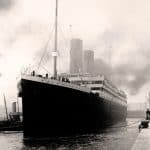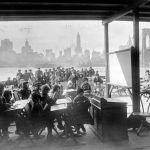“The sun rose clear and beautiful from the hills that surrounded Biltmore; All the world seemed happy on that day,” began “The First Bride of Biltmore,” a poem written for Cornelia Vanderbilt on her wedding day.
On April 29, 1924, the Biltmore Estate, with its grand halls and sweeping landscapes, became the setting for one of the most glamorous weddings in American history.
Cornelia Vanderbilt, the heiress of the illustrious Vanderbilt family, married British diplomat John Francis Amherst Cecil in a dazzling event that united the elegance of the American South with British aristocracy.
This wedding was a defining moment in Southern history, a showcase of grace, tradition, and luxury that still fascinates historians today. Let’s explore the details of Cornelia Vanderbilt’s wedding, a day that remains etched in Southern history.
The Wedding of the Decade: A Union of Elegance and Diplomacy
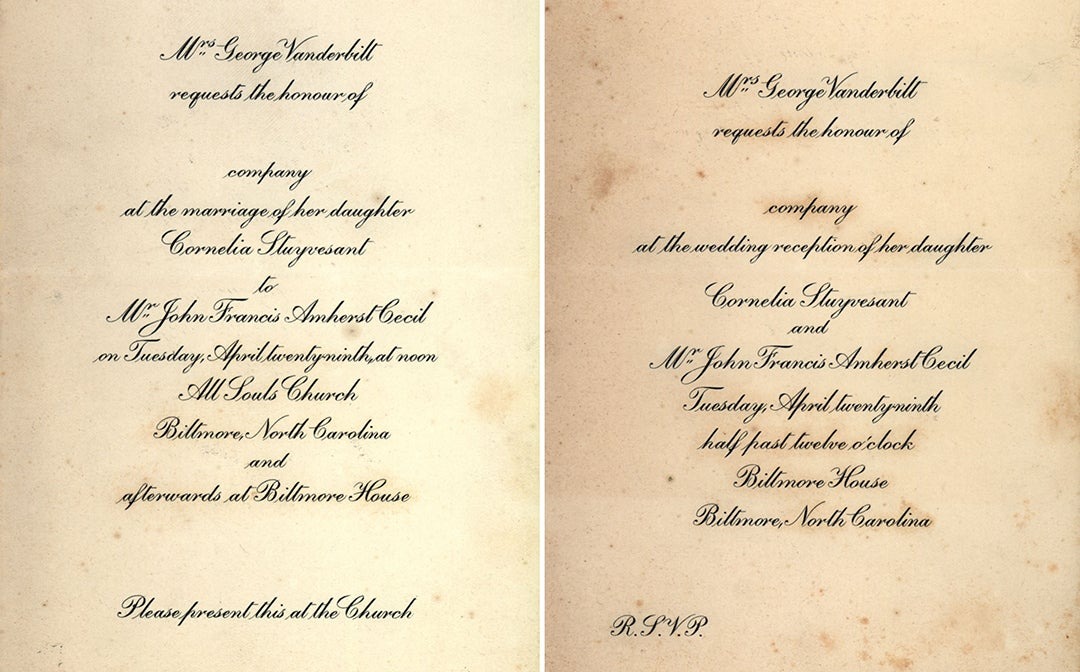
Cornelia Vanderbilt’s wedding to British diplomat John Cecil was more than just a lavish celebration—it was the blending of two powerful families from opposite sides of the Atlantic.

The guest list featured 500 distinguished guests from both the U.S. and Europe, including diplomats, aristocrats, and socialites.

The couple exchanged vows at the picturesque All Souls Church in Asheville, North Carolina, followed by a stunning reception at the grand Biltmore Estate, Cornelia’s family home.
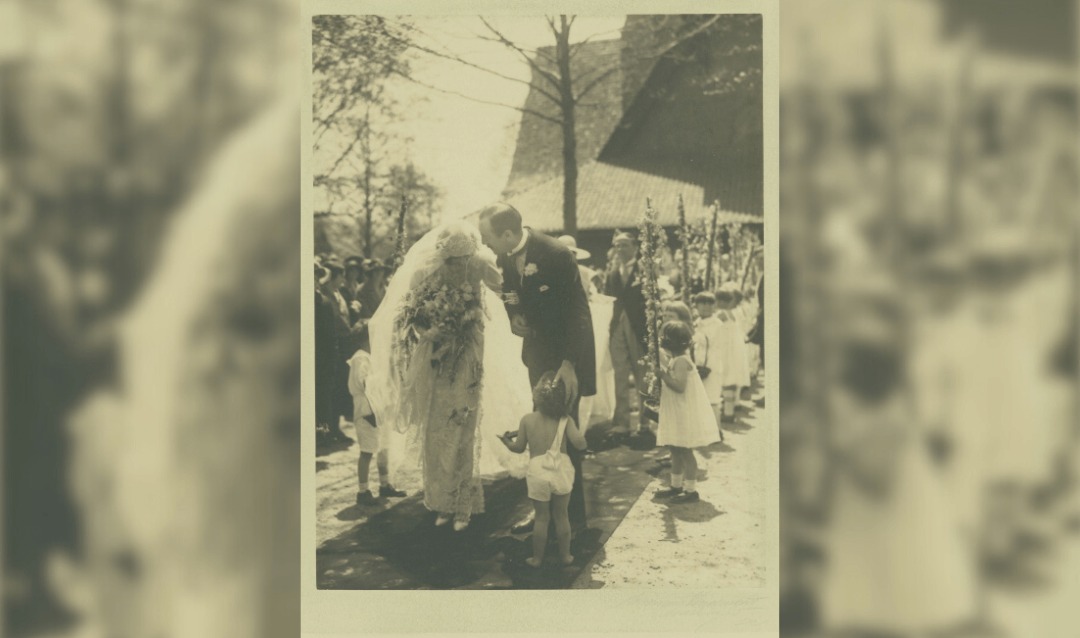
The grandeur of the estate, combined with the glamour of the 1920s, made the wedding a symbol of elegance and prestige.
Months of Preparation: Attention to Every Detail
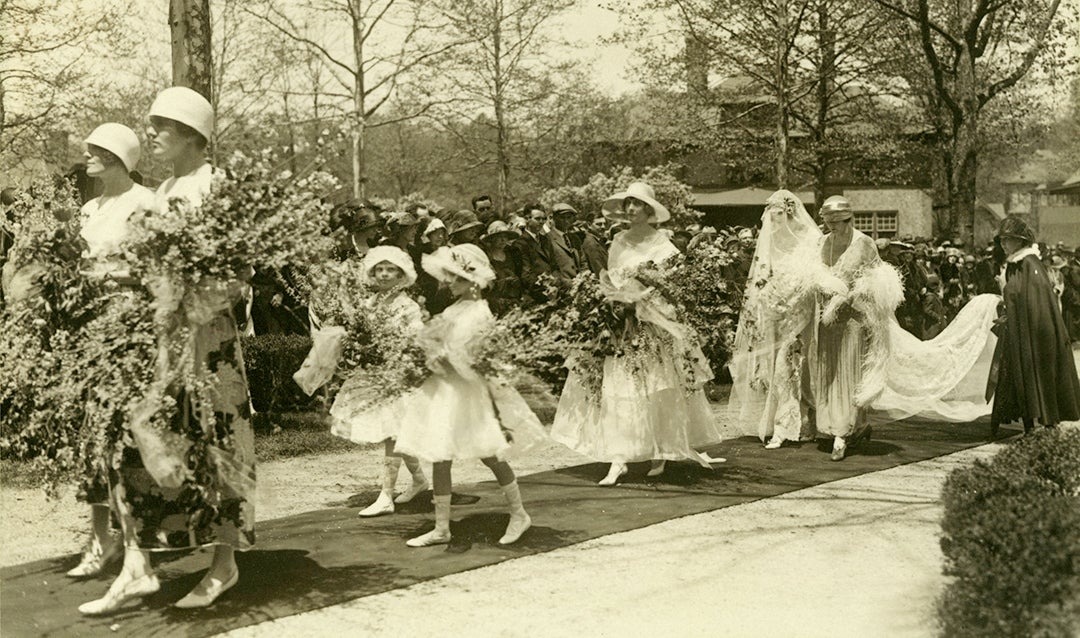
The preparations for Cornelia’s wedding began months in advance, with the Vanderbilt family ensuring every detail was flawless.

Edith Vanderbilt, Cornelia’s mother, hosted a formal announcement dinner on March 8, 1924, which set the tone for the grandeur that followed.
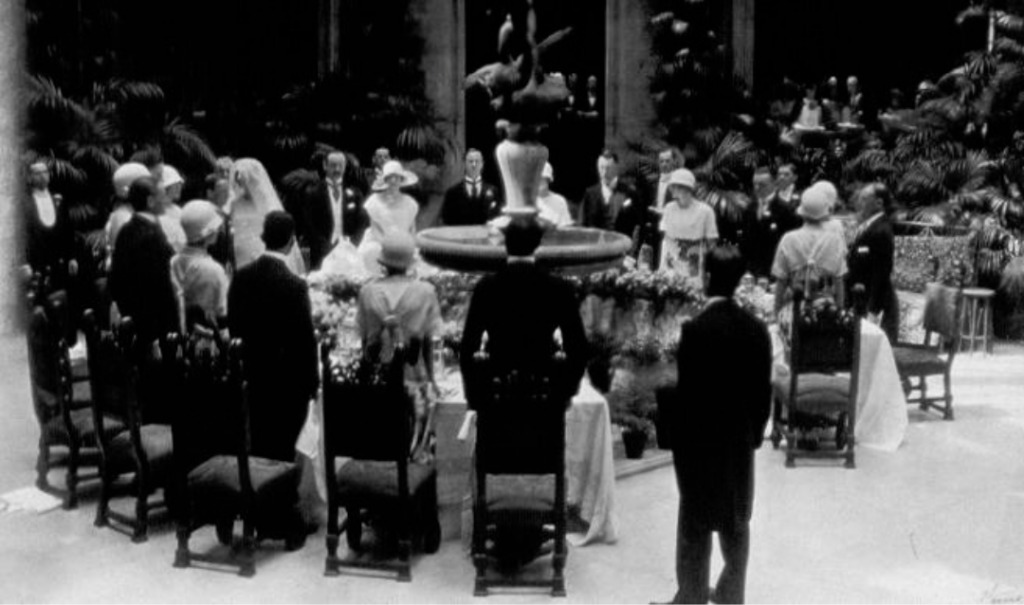
The wedding invitations were meticulously crafted by Adolph & Dungan engravers and printed by Inland Press of Asheville.
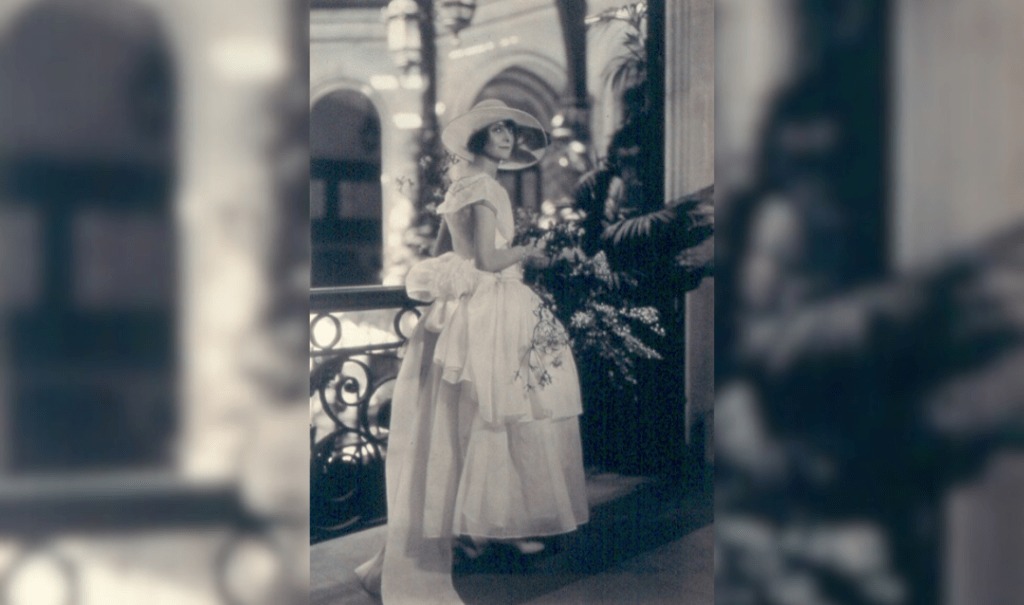
The estate’s domestic staff began updating rooms as early as March 15, ensuring that the 43 house guests staying at the Biltmore House experienced the finest hospitality.

The Oak Sitting Room and other areas were freshly renovated with new wallpaper, furniture, and decorations to make everything perfect for Cornelia’s bridal party.
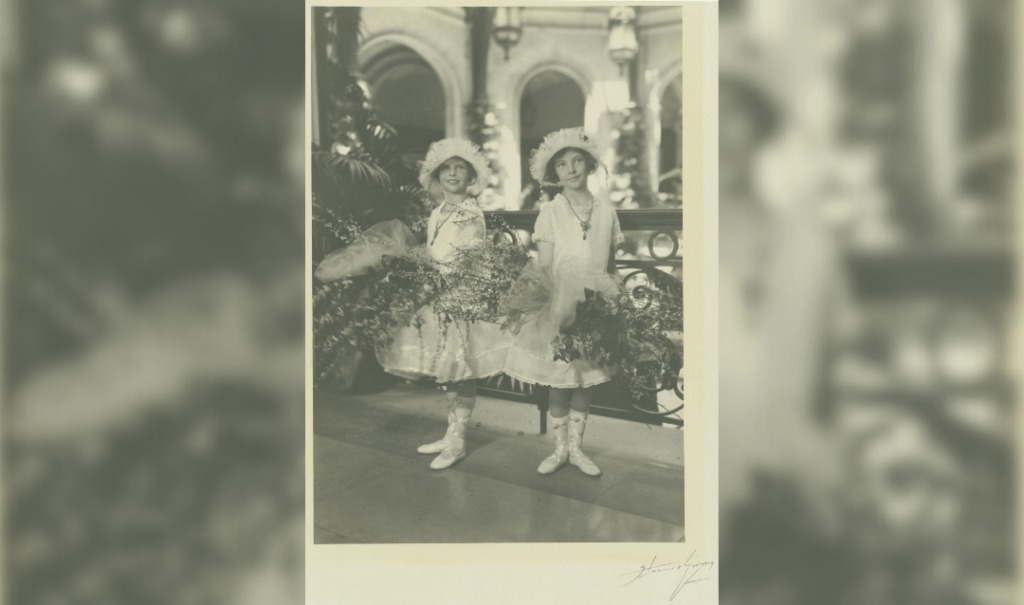
No detail was overlooked. From the impeccably prepared accommodations to the stunning gardens, which were in full bloom, every inch of the estate was transformed into a breathtaking backdrop.
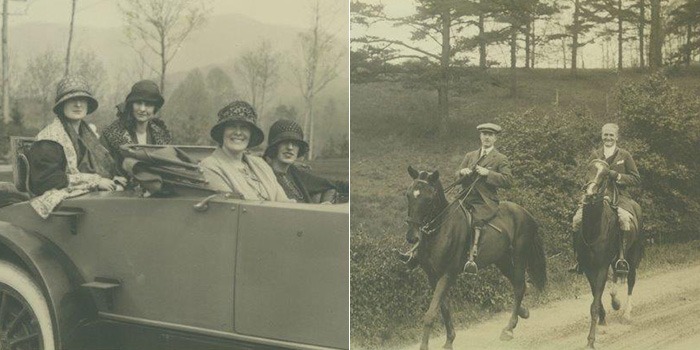
Guests spent days before the wedding exploring the gardens and grounds, marveling at the beauty and care poured into every aspect of the event.
Cornelia Vanderbilt’s Stunning Wedding Dress
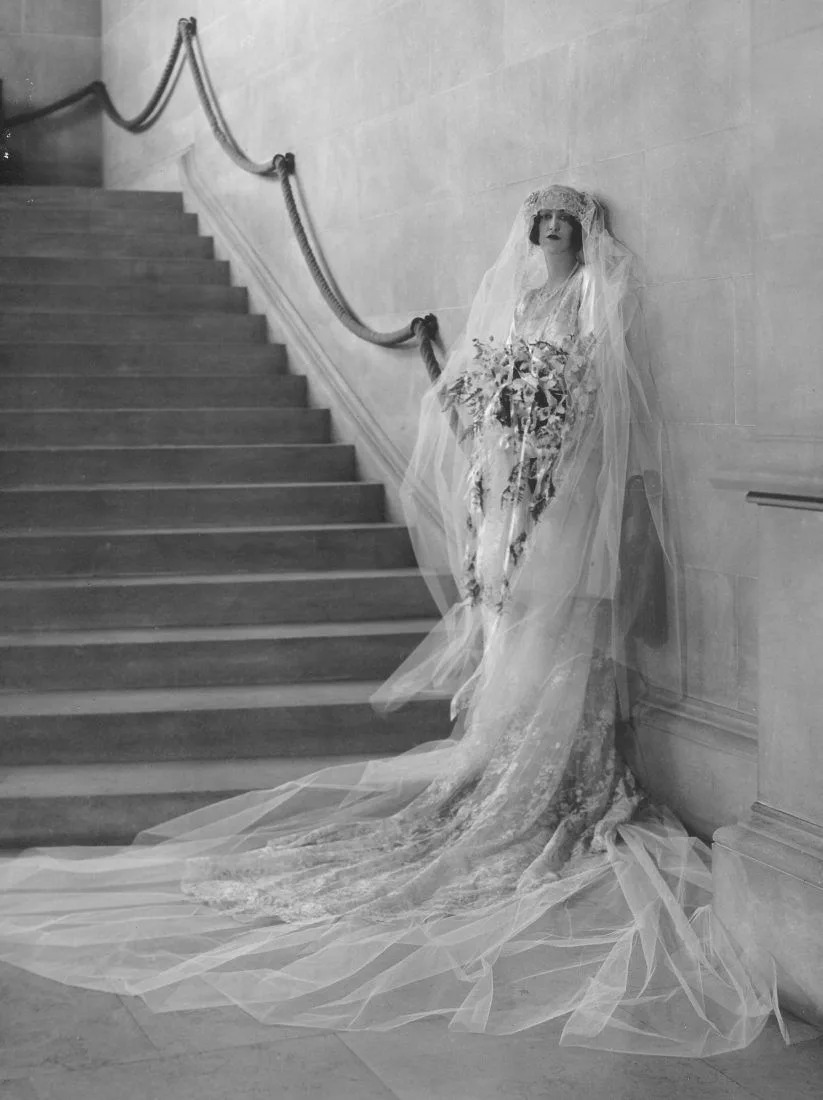
One of the most captivating elements of the wedding was Cornelia Vanderbilt’s elegant wedding dress.
Designed by the elite society designers Farquharson & Wheelock, the gown was a stunning example of the tabard style popular in the 1920s. This particular design featured a silk slipper-satin sheath with long sleeves and an intricate lace tunic overlay.

Her bridal veil—an incredible four yards long—was adorned with orange blossoms from Florida, which also decorated her satin slippers.
Her veil included elements from a family heirloom—her maternal grandmother’s rose-point lace veil—further adding to the gown’s historical significance.
The delicate lace motifs were hand-cut and appliquéd onto the tulle, creating a cascading effect of elegance and tradition.

The Asheville Citizen described Cornelia’s entrance as unforgettable: “Her bridal veil of tulle and lace, which she wore over her face when entering the church, was four yards long. It was caught with orange blossoms from Florida…
Her bridal bouquet was of orchids and lilies of the valley, made in Asheville by the Middlemount Gardens. Each of her satin slippers was ornamented with a single orange blossom.”
A Grand Reception at the Biltmore Estate
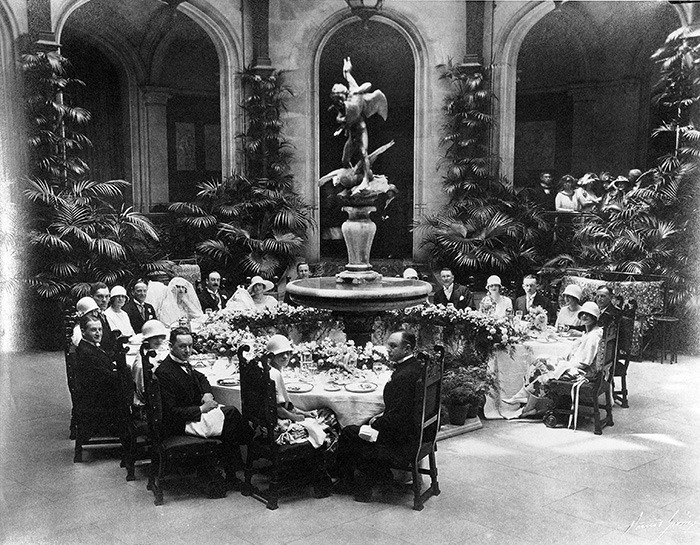
Following the church ceremony, the reception took place at the Biltmore’s Palm Court, where tables were arranged around a marble fountain.
The lavish celebration saw 1,000 attendees, each mingling in the estate’s grand halls and gardens.
As guests entered, they were greeted by the sight of the American Flag and British Union Jack hanging side by side, symbolizing the unity of the two nations through Cornelia and John’s marriage.
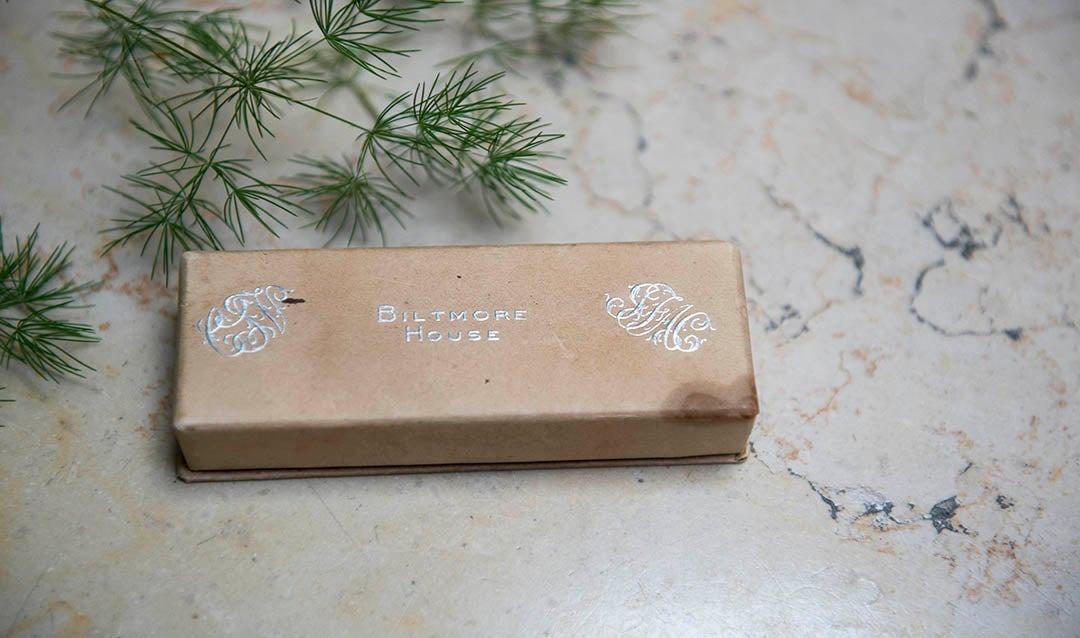
The reception featured a wedding breakfast and gifts that reflected the Vanderbilt family’s wealth.
Gifts included 70 pieces of silver, 53 pieces of china, and various works of art. One of the most notable gifts was an English Setter puppy—a heartfelt gift from the estate’s servants.
‘The First Bride of Biltmore’

A poem called ‘The First Bride of Biltmore,’ written by Cornelia Vanderbilt’s aunt, Pauline Merrill, describes her wedding day on April 29, 1924, in a simple and heartfelt way.
The sun rose clear and beautiful from the hills that surrounded Biltmore.
All the world seemed happy on that day.
The daughter of the house was to be married.
The beautiful Cornelia who knew all the mountain people;
The Cornelia who loved the house and grounds;
The Cornelia who was loved by all.
The wedding bells pealed joyfully from the belfry of the little old church.
The tenants were crowding to the gate to behold their beloved mistress.
The guests crowded into the church.
The musicians played his best of the little organ.
Finally the bride entered the church escorted by eight bridesmaids and leaning on the arm of her widowed mother.
She looked more beautiful than ever before.
John Cecil, her bridegroom, had reason to smile proudly on his pretty Cornelia.
The marriage service was gone through with, and when Cornelia walked out, with a radiant smile on her face, the children streamed flowers at her feet.
Then they went back to the house.
The enormous rooms were fuller than ever before as the crowd surged forward to congratulate the first bride of Biltmore House.
Her English husband shook hands with a proud smile.
But, at last, it was over and the setting sun shone rosily over the young couple as they started on their honeymoon.

